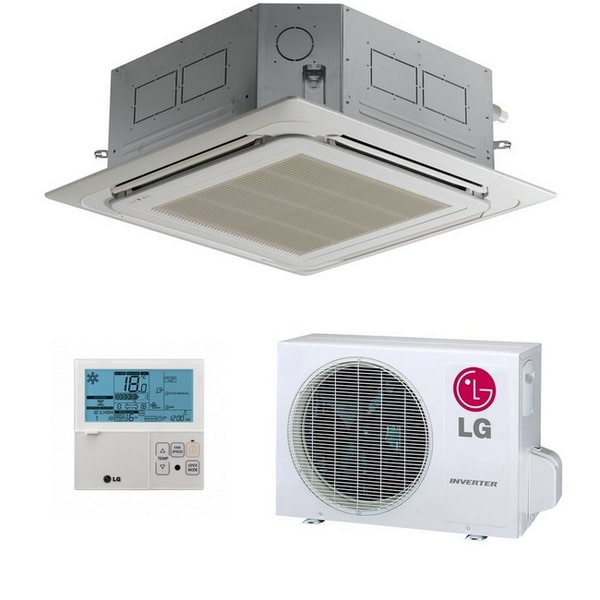Cassette type Air Conditioning
The Unseen Comfort: Exploring Cassette Type Air Conditioning
When we envision air conditioning, our minds often jump to the familiar wall-mounted split units or perhaps the compact window ACs that adorn countless homes and offices. However, there’s another powerful, discreet, and incredibly efficient player in the world of climate control that often operates unseen, delivering superior comfort from above: the cassette type air conditioner. As professionals deeply invested in understanding optimal indoor environments, we’ve had the opportunity to observe and appreciate the unique advantages this system brings to a wide range of spaces.
Unlike its more visible counterparts, the indoor unit of a cassette AC is cleverly recessed into the ceiling, leaving only a sleek, flat panel visible. This design choice is not merely aesthetic; it’s fundamental to its exceptional performance and quiet operation. Today, we want to delve into the specifics of this sophisticated cooling solution, examining what makes it stand out, where it truly excels, and what we, as discerning users, should consider before making it our cooling partner.
What Exactly Is Cassette Type Air Conditioning?
At its core, a cassette type air conditioner operates on the same principles as other split systems, comprising an indoor unit and an outdoor unit connected by refrigerant lines. The crucial distinction, however, lies in the design and placement of the indoor unit. Rather than being mounted on a wall, this unit is designed to fit snugly within a false or suspended ceiling. Only a stylish grille, typically square or rectangular, remains flush with the ceiling surface, blending seamlessly into the architectural design of a room.
What truly sets a cassette system apart and contributes to its superb effectiveness is its multi-directional airflow. Most cassette units feature a 2-way, 4-way, or even 8-way discharge system. This means that cooled air isn’t just blown in one direction; it’s distributed evenly across the entire space through multiple louvers. This ingenious design ensures that cool air reaches every corner of the room, eliminating hot spots and creating a consistently comfortable environment, which we find to be a significant advantage over conventional wall-mounted units that often struggle with uniform distribution in larger or irregularly shaped rooms.

The Advantages We’ve Discovered
Through our experience, we’ve identified several compelling reasons why a cassette type AC might be the ideal choice for various applications:
- Unparalleled Aesthetics and Space-Saving: This is perhaps the most immediate benefit we notice. By being integrated into the ceiling, the cassette unit becomes virtually invisible. It doesn’t intrude on wall space, doesn’t clash with interior decor, and maintains clean, uncluttered lines. For commercial establishments like restaurants, retail stores, or high-end offices, where aesthetics are paramount, this discreet design is invaluable. In our homes, it means we can place furniture freely without worrying about obstructing airflow or compromising the visual flow of a room.
- Superior Air Distribution and Uniform Cooling: The multi-directional airflow is a game-changer. Instead of cool air being blasted from one point, it’s gently dispersed across a wide area. We’ve observed that this leads to remarkably consistent temperatures throughout a room, minimizing the common issue of some areas being too cold while others remain warm. This even distribution drastically enhances comfort, making it ideal for open-plan offices, large living areas, or retail spaces where consistent temperature is crucial for customer and employee satisfaction.
- Enhanced Energy Efficiency: Modern cassette units often incorporate inverter technology, which allows the compressor to vary its speed according to the cooling demand, rather than simply cycling on and off. This leads to significant energy savings over time. Furthermore, because of their superior air distribution, these units can often cool a large space more effectively and efficiently than multiple smaller units or a single wall-mounted unit struggling against the room’s dimensions. This, for us, translates into lower utility bills and a reduced environmental footprint.
- Quiet Operation: One of the most common complaints about air conditioning units is noise. Because the main body of the cassette unit is housed within the ceiling, the operational noise is significantly muffled. We’ve consistently found that cassette systems provide a refreshingly quiet indoor environment, allowing for undisturbed conversations, focused work, or peaceful relaxation. This makes them perfectly suited for libraries, conference rooms, bedrooms, or any space where tranquillity is valued.
- Versatility for Diverse Environments: We’ve seen cassette ACs deployed successfully in a wide array of settings. Their ability to deliver powerful, yet evenly distributed, cooling makes them perfect for commercial spaces such as hotels, banquet halls, large retail outlets, and corporate offices. However, their aesthetic appeal and consistent comfort also make them an increasingly popular choice for spacious modern homes, basements, or rooms with unique architectural features where wall space is limited.
- Relatively Easy Maintenance (for accessible components): While the main unit is recessed, many cassette models are designed with easily removable grilles, allowing filters to be accessed and cleaned without the need for ladders or specialized equipment. This user-friendly approach to routine cleaning helps maintain air quality and unit efficiency, which we always advocate for.
Considerations Before We Choose
While the advantages are numerous, we also believe it’s important to consider some factors before deciding on a cassette type air conditioning system:
- False Ceiling Requirement: The most critical prerequisite for installing a cassette AC is the presence of a false or suspended ceiling. The indoor unit needs to be fully recessed. If your space doesn’t have one, installing a false ceiling will be an additional cost and construction effort, which we must factor into the overall project.
- Initial Installation Complexity and Cost: Due to the nature of their installation, fitting a cassette AC is generally more complex than putting up a wall-mounted split unit. It requires precise measurements, careful integration into the ceiling structure, and professional expertise for both the AC installation and often coordination with ceiling work. Consequently, the initial installation cost can be higher.
- Drainage Requirements: Like all air conditioners, cassette units produce condensate. A proper drainage system must be installed within the ceiling void to channel this water away. This needs to be carefully planned during installation to prevent potential water damage or mold issues, something we always emphasize to our clients.
- Professional Servicing: While routine filter cleaning is accessible, deeper maintenance and servicing of the internal components will require a qualified HVAC technician. Given their ceiling location, accessing certain parts might be more involved than with a wall-mounted unit.
Who Benefits Most from Cassette AC?
Based on our observations, we believe cassette type air conditioning is an excellent solution for:
- Commercial Spaces: Offices, retail stores, restaurants, hotels, and educational institutions looking for consistent, quiet, and aesthetically pleasing cooling.
- Large Residential Areas: Open-plan homes, lofts, or rooms with expansive layouts where uniform cooling from a single, powerful unit is desired.
- Spaces with High Aesthetic Standards: Environments where wall space needs to remain clear, and the HVAC system should blend seamlessly into the interior design.
- Areas Requiring Superior Air Distribution: Rooms where traditional spot cooling isn’t sufficient to maintain overall comfort.
Conclusion
In our pursuit of optimal indoor comfort, we’ve come to recognize the cassette type air conditioner as a formidable and often underestimated solution. Its ability to provide powerful, uniform, and quiet cooling while remaining virtually invisible makes it an ideal choice for a diverse range of applications. While its installation requires a false ceiling and a slightly higher initial investment, the long-term benefits in terms of aesthetics, comfort, efficiency, and quiet operation often far outweigh these considerations. As we continue to seek out the best in climate control, we firmly believe that for those who prioritize discreet design and superior performance, the unseen comfort delivered by a cassette AC is truly a breath of fresh, cool air.
Frequently Asked Questions (FAQs)
Q1: How often should we service our cassette AC? A1: We recommend a professional service at least once a year, ideally before the start of the cooling season. Regular maintenance ensures optimal performance, energy efficiency, and prolongs the lifespan of the unit. We also advise cleaning the accessible filters monthly or quarterly, depending on usage and air quality, to maintain good airflow and indoor air quality.
Q2: Are cassette ACs more energy-efficient than wall-mounted splits? A2: Not inherently, as energy efficiency primarily depends on the unit’s Seasonal Energy Efficiency Ratio (SEER) or Energy Efficiency Ratio (EER) rating and whether it features inverter technology. However, due to their superior multi-directional airflow, cassette units can often cool a large or complex space more effectively and uniformly with less effort than a wall-mounted unit, potentially leading to greater overall energy savings in specific applications, as they don’t have to work as hard to achieve even temperatures.
Q3: Can we install a cassette AC in a room without a false ceiling? A3: Unfortunately, no. The design of a cassette AC requires it to be fully recessed into a false or suspended ceiling. If your room does not have one, it would need to be constructed as part of the installation process. This is a crucial structural requirement for this type of air conditioning system.
Q4: What is the difference between a 2-way and 4-way cassette? A4: The difference refers to the number of directions the cooled air is discharged. A 2-way cassette typically distributes air from two opposite sides of the grille, while a 4-way cassette distributes air from all four sides. Some advanced models even offer 8-way or omni-directional airflow for even greater uniformity. The choice depends on the room’s shape, size, and specific cooling needs. For larger or more irregularly shaped rooms, we generally recommend a 4-way or higher for better air distribution.
Q5: Are they noisy? A5: Generally, no. Cassette type AC units are known for their quiet operation. Because the main fanned components are housed within the ceiling void, the noise they produce is significantly dampened before it reaches the living or working space. This makes them an excellent choice for environments where low noise levels are a priority, such as offices, bedrooms, or libraries.


